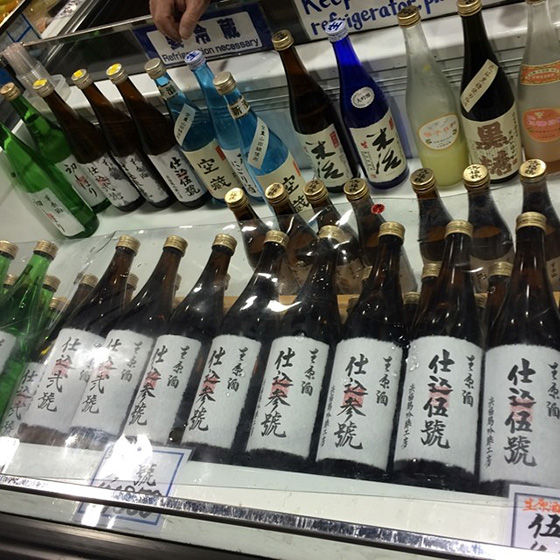Analyzing Isotopes for Nitrate in Sake for Combating Beverage Fraud in Japan
- Research
Researchers analyze oxygen and nitrogen stable isotope ratios in nitrate to authenticate the source of sake
The demand for sake—a Japanese alcoholic drink—has increased globally. However, the rise in the popularity of sake has the potential for related beverage fraud. To address this issue, researchers from Japan identified a novel method to authenticate the source of and differentiate between sake breweries. They measured the oxygen and nitrogen stable isotopes in nitrates within sake using denitrifying bacteria first. Their findings could help prevent mislabeling of the sake’s brewery of origin.

Title: A novel method for authenticating sake and combating potential beverage fraud
Caption: Researchers from Japan explored stable isotope analysis to authenticate sake and distinguish different sakes from different breweries—they measured oxygen and nitrogen stable isotope ratios in the nitrate content of sakes using denitrifying bacteria. This method could potentially combat the global issue of sake fraud.
Credit: tami_chan from Flickr (https://openverse.org/image/4cf77e33-8f08-4c04-9217-872c5d115088)
Usage restrictions: Under a Creative Commons license CC BY-NC-SA 2.0.
With the growing appreciation for Japanese culture worldwide, the traditional alcoholic beverage of Japan called “sake”—made using rice, rice koji (a type of fungus), and water—has seen a rise in demand in many countries, including China, South Korea, and the United States.
Given the pervasiveness of beverage fraud globally, a researcher duo from Japan, Professor Hiroto Kawashima and Ms. Momoka Suto, recently sought a method to authenticate the sake’s place of origin and prevent its mislabeling. Their findings were made available online on 13 March 2024 and published in Volume 198 of LWT – Food Science and Technology on 15 April 2024. Prof. Kawashima from the Shibaura Institute of Technology remarks on the significance of their study, “Recently, many parts of the world are home to sake production, and studies such as ours can help prevent the falsification of sake breweries. We believe that our research will be important for sake breweries.”
Accordingly, the duo devised a novel strategy using denitrifying bacteria to identify the origin of sake and distinguish between products from different breweries. They examined the proportional presence of isotopes, i.e., variations of a chemical element differing in neutron count, while retaining the same proton count of oxygen (O) and nitrogen (N) within nitrate molecules across various sake samples.
The researchers found an N isotope signature across various types of sake within a single brewery, which could be used as a marker to identify or authenticate sake from specific breweries. Prof. Kawashima adds, “The denitrification method can analyze the stable isotope ratios of N and O in nitrate with high precision. Since our laboratory was able to perform these analyses, we proceeded with the idea that these analyses could find use in foods and beverages.”
To perform the study, the researchers measured the concentrations of five water-soluble ions and the stable isotope ratios of nitrate, including δ15N–NO3− (read as “delta fifteen N, nitrate”), in 49 commercial sake samples from 11 breweries in Akita Prefecture, Japan, stable isotopes being those that do not undergo radioactive decay over time.
The study showed that the nitrate concentrations in sake were similar to those in groundwater, indicating that these ions originated from the brewing water. Specifically, as revealed by the principal component analysis technique, the δ15N–NO3– values could distinguish between different breweries, as the values were consistent within sake types from the same brewery.
Remarkably, the denitrifying method combined with the solid-phase extraction method, a technique used to isolate and concentrate specific compounds from the sake, was applied for the first time, indicating the novelty of the approach taken in the study to analyze the composition of sake. In this regard, Prof. Kawashima notes, “We have analyzed the isotope ratios of N and O in nitrate in beverages for the first time in the world. Notably, these ratios differed from brewery to brewery.”
In summary, the study contributes to our understanding of the factors influencing the composition and quality of sake and its potential applications in quality control, all thanks to the efforts of Prof. Kawashima and Ms. Suto. Their research contributes to the ongoing advancement of analytical techniques in beverage science and underscores the importance of interdisciplinary approaches in exploring traditional food and beverage products.
Reference
| Title of original paper: |
Water-soluble ions and nitrogen and oxygen stable isotope ratios in nitrate in sake in Akita, Japan |
| Journal: | |
| Article link: | 10.1016/j.lwt.2024.115963 |
Authors
About Professor Hiroto Kawashima from SIT, Japan
Professor Hiroto Kawashima heads the Environmental Science Laboratory at Shibaura Institute of Technology, Japan. Prof. Kawashima is an expert in environmental science, environmental forensics, applied chemistry, and analytical chemistry, with over ten years of research experience. A few of his research areas include source apportionment of particulate matter in air and volatile organic compounds, development of analytical methods for carbon stable isotope ratios of water-soluble organic compounds, and environmental fate of pesticides using stable isotope ratios. He has authored more than 43 reputed research publications, which garnered over 600 citations.
About Ms. Momoka Suto from Japan Chemical Analysis Center (previously Akita Prefectural University, Japan)
Ms. Momoka Suto is a lead researcher in analytical and food chemistry. Ms. Suto is currently working on the pioneering project, “Development of discrimination for water-soluble vitamins using multi-stable isotope analysis,” since 2022. She graduated from the Graduate School of Systems Science and Technology, Akita Prefectural University, in 2021. She has authored over eight research publications in reputed national and international journals.
Funding Information
The study was supported by the Japan Society for the Promotion of Science Grants-in-Aid for Scientific Research (KAKENHI) (nos. 22K05535, 21H04929 and 18H03393), Grant-in-Aid for Challenging Research (no. 20K20639) from the Ministry of Education, Culture, Sports, Science and Technology, Japan, and Sasakawa Scientific Research Grant (no. 2020-6045) from the Japan Science Society, and Honjo Yuri Industry-Academia Promotion Grant.